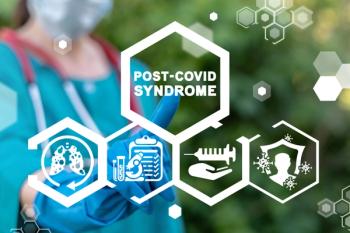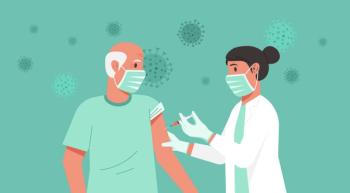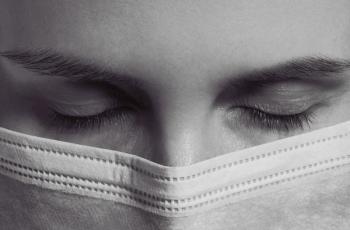
To Mask or Not To Mask? Why Is This Even a Question?
Politics have gotten in the way of mask-wearing, and they should not.
GAP Disaster, Trauma and Global Health Committee, Co-Chairs: Kathleen A. Clegg, MD and Grant Brenner, MD
Scientists and infectious disease experts have now definitively demonstrated that wearing masks, social distancing, washing our hands, and implementing a program of aggressive contact tracing are the best means for combatting the spread of the coronavirus disease 2019 (COVID-19). This is obscured by dangerous proclamations that COVID-19 is a hoax.
We have been seeing the erosion of a belief in science and data for several years now. While we strongly believe in public debate about scientific data where indicated, we believe that adherence to blind partisan beliefs will be to the detriment of our society.
Data has shown that the schism between mask wearers and non-mask wearers runs substantially along political party lines: Democrats are more accepting of and willing to wear a mask; Republicans are less likely to accept and wear a mask.1 With a massive rift between those who wear masks to protect themselves and those with whom they come in contact and those who refuse to do so despite overwhelming evidence of the utility of wearing a mask, our nation is at an ideological and moral crossroads.
As psychiatrists with expertise in disasters, trauma, and global health, we are particularly concerned with the individual factors that appear to have the greatest impact on resistance to wearing a mask.
First, people may report that masks are uncomfortable, make it hard to breath, and irritate their skin. People can be encouraged to start wearing a mask for a short period of time at home and work up to wearing it for longer periods of time, becoming acclimated to wearing masks using a technique psychologists call “systematic desensitization” or “gradual exposure.”2
Other people have asserted that wearing a mask is a personal choice, a basic right on par with freedom of speech and the right to bear arms. But wearing a mask is also clearly a public safety issue. How does this differ from the cases of so many other widely accepted public safety issues? When our personal decisions affect others, we cross the line where the public good outweighs personal choice.
When we stop at red lights so roads can be safe for all drivers and pedestrians, it is a public safety issue. The tedious airport security screening process ensures the safety of everyone. We as a society have come to accept the requirement of wearing seatbelts and securing children in car seats. It is illegal to drive under the influence of substances due to the safety risk that poses to everyone else on the road. You can’t yell “FIRE” in a crowded theater when there is no threat, and hate speech is a crime. Why are so many public safety practices widely accepted, while wearing a mask is not? The presence of laws can explain partly, but not completely, why the public cooperates with certain expectations around safety and not with others.
Some people who resist wearing masks have attempted to discredit Anthony Fauci, MD, and the Centers for Disease Control and Prevention (CDC) because of changes in expert recommendations. Such people neglect to appreciate that COVID-19 is a novel virus, which is not yet well understood. Information about its spread is continually being updated. Experts typically need to revise their recommendations as new data becomes available about any area on the edge of our understanding.
We in medicine and psychiatry are accustomed to changing recommendations as new information becomes integrated into practice. Practice always lags behind research, a consequence of constant learning and improving. Initial recommendations are generally the best available at the time. Although countless health recommendations have changed over the years, it is still hard for the general public to accept this aspect of medical advancement.
Psychiatrists, while we have our own strong and diverse personal beliefs and political positions, place a high value on empathy and compassion, seeking to understand others’ perspectives to build bridges for the common good. We have come to understand that it is easy to misinterpret information, and that trust, once lost, is hard to regain. We have certainly come to appreciate that there are many factors influencing peoples’ behavior. Anxiety, in particular, is a strong, often unconscious motivator triggered by a myriad of factors, and heightened by the general level of distress in the population.
People who refrain from wearing a mask may include:
- Those traumatized after assault by someone who was wearing a mask may be triggered by seeing others wear a mask or wearing a mask themselves.
- Those who have experienced medical crises in which they felt short of breath may feel anxious when their airway is covered. They may have a valid medical concern if the type of covering used actually obstructs breathing, and they should consider consulting with their doctor about an appropriate face covering if safety is a concern.
- Those who have been bullied, silenced, and coerced, especially by authority figures and/or caregivers, may experience outrage, fear, and powerful mistrust if they are mandated to take any action, particularly if they don’t see the source from which the recommendation is coming from as credible.
- Those who have been victims of racist victimization and negative collective cultural experiences; a person of color may fear wearing a mask in a store or public place because of real and perceived risk that doing so may expose them to unacceptable profiling or physical danger.
- Those with issues of rebellion (“No one can tell me what to do!").
- Those who feel that wearing a mask makes one appear to be fearful and weak.
Yet, despite all the reasons listed above that people may choose not to wear a mask, people do change their minds. We have seen people begin wearing a mask even after months of insisting it was not necessary. With that in mind, we consider the following questions in wondering how people shift from not wearing to wearing masks:
- Is there a significant rise in the number of COVID-19 cases in their state?
- Is there the prospect of businesses closing again?
- Is there the risk of schools not reopening?
- How important it is for children to return to school even as the numbers of cases in their community continue to rise sharply?
- Do peoples’ attitudes change when they lose someone close to them, see the grim toll of COVID-19 in their hometown, hear sirens at all hours, rather than an abstract news article about somewhere far away?
- Is it a result of a cultural shift, brought on by the reality that COVID-19 is here to stay?
Some people are already wearing masks whenever they leave their home to protect their health, to protect the health of others, loved ones, as well as strangers. Contrary to how it may seem, wearing masks allows us to return to a more normal way of life, letting the economy re-open, permitting childcare to resume for people who cannot work from home. Combined with social distancing, proper mask use allows some social and recreational activities to safely resume.
We are still left with these questions: What will it take for mask use to become a regular practice in the United States, as it has in so many other parts of the world? When will masks be seen as for the public good, and not conflated with politics and polarization?
Dr Kathleen A. Clegg is the Director of Ambulatory Psychiatry and Community Psychiatry at University Hospitals Cleveland Medical Center and Associate Professor of Psychiatry at the Case Western Reserve University School of Medicine. She has a long standing interest in Disaster Psychiatry and has taught courses on the psychosocial aspects of disasters internationally for over 20 years. Dr Grant H. Brenner is a psychiatrist and psychoanalyst in private practice in Manhattan. He is CEO of Neighborhood Psychiatry, Co-Chair of the Group for the Advancement of Psychiatry's Committee on Disasters, Trauma and Global Health, is on the Board of Directors of Vibrant Emotional Health for the Crisis and Emergency Care Team, and is Assistant Clinical Professor at Mount Sinai Beth Israel, enjoying writing, teaching and learning.
References
1. Katz J, Sanger-Katz M, Quealy K. A Detailed Map of Who Is Wearing Masks in the US. The New York Times. July 17, 2020. Accessed October 5, 2020.
2. Wolpe J. The Practice of Behavior Therapy. Pergamon Press; 1969.
Newsletter
Receive trusted psychiatric news, expert analysis, and clinical insights — subscribe today to support your practice and your patients.

















